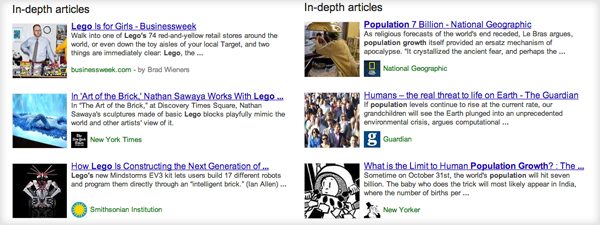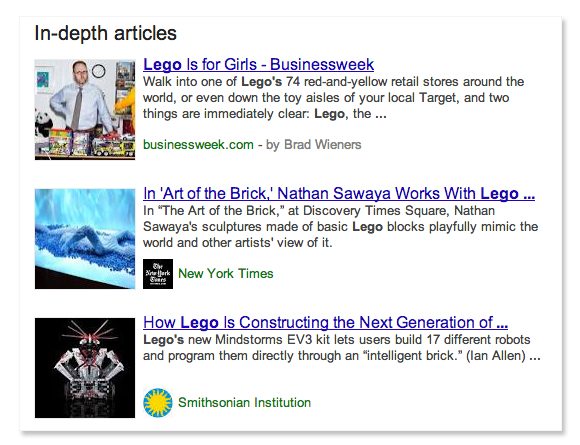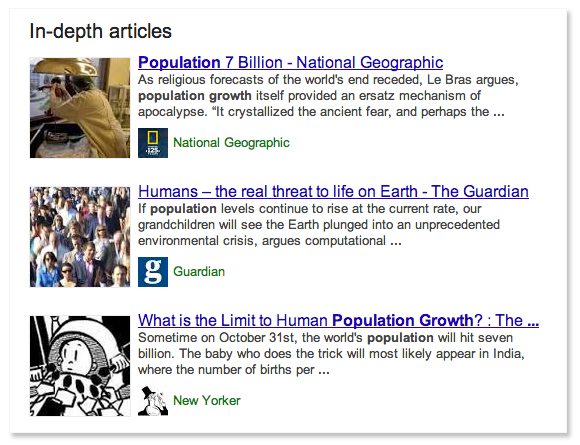
We often talk about the value of visual or “snackable” content — pieces that users can quickly skim on their smartphone or in the Facebook feed. While these pieces perform well in social media and work with our distracted, busy culture, two paragraphs isn’t always enough. According to a recent Google study, about 10% of people’s daily information needs fit into the “in-depth” category, which means they require longer form content to get a sufficient answer.
With this in mind, Google is now rewarding longer content by rolling out a new block on the search results page reserved for in-depth articles. As Google explains, these in-depth articles are high-quality content pieces that help users get a more exhaustive explanation of a topic. So rather than a 200 word blog post or infographic, you’ll see long reads that cover extensive facts and points of view.

In the example above, all of the in-depth articles come from publications with household names — but this box isn’t exclusive to big names. Google notes that “In addition to well-known publishers, you’ll also find some great articles from lesser-known publications and blogs.”
To see how it works, I searched Google’s recommended “population growth” query. I had to scroll down to see the in-depth articles box, which appeared under standard results like Wikipedia, images and news. The box included results from National Geographic, The Guardian and The New Yorker.
 Now the important question: how can you land your content in the in-depth article box? In a help center article on the topic, Google explains that “while the feature is based on algorithmic signals, there are steps you can take as a webmaster to help Google find your high-quality, in-depth content and present it to users in the search results page.”
Now the important question: how can you land your content in the in-depth article box? In a help center article on the topic, Google explains that “while the feature is based on algorithmic signals, there are steps you can take as a webmaster to help Google find your high-quality, in-depth content and present it to users in the search results page.”
Here are the steps Google details for optimizing your site for the new in-depth articles feature.
1. Use Schema.org article markup
Google notes that it helps if you can implement certain aspects of the Schema.org Article markup, including headline, alternativeHeadline, image, description, datePublished and articleBody.
2. Authorship markup
Google authorship is important for articles of any length, but especially so for in-depth articles. Make sure each of your authors set this up.
3. Pagination and canonicalization
Make sure that both pagination and canonicalization are executed correctly. If these are foreign concepts to you, Google has helpful videos on pagination and canonicalization.
4. Logos
As you’ll notice in the screencaps above, the publication logo appears next to content in the in-depth articles box. Make sure your logo appears by either linking your Google+ Page to your website or by using organization markup to specify your logo.